There are few garden pleasures as enchanting as the fragrance of blooming lilacs drifting through the air on a spring morning. Their lush clusters of purple, pink, or white blossoms signal the true arrival of spring, filling your garden — and your senses — with timeless charm.
But growing lilacs isn’t just about beauty; it’s about creating a living memory. Many gardeners remember the scent of lilacs from their childhood homes or old family gardens, and planting one today is like planting nostalgia itself.
Whether you’re cultivating a single lilac bush in your backyard or planning a fragrant hedge, this detailed guide will help you grow healthy, long-lasting lilacs that bloom with the sweetest scent every spring.
Why Grow Lilacs?
Lilacs (Syringa vulgaris) are more than ornamental shrubs — they’re symbols of renewal, affection, and grace. Their beauty lies not only in their soft, clustered blooms but in their unmistakable fragrance, which can perfume your entire garden.
Here’s why lilacs deserve a spot in your garden:
- Fragrance: Among the most fragrant spring blooms in the world.
- Longevity: Can live and bloom for decades, even generations.
- Low Maintenance: Once established, lilacs require minimal care.
- Pollinator Friendly: Attract bees, butterflies, and hummingbirds.
- Versatile Landscaping: Perfect as a hedge, specimen plant, or backdrop to other spring flowers.
If you love old-fashioned, cottage-style gardens or romantic spring color, lilacs are simply essential.
Step 1: Choosing the Right Lilac Variety
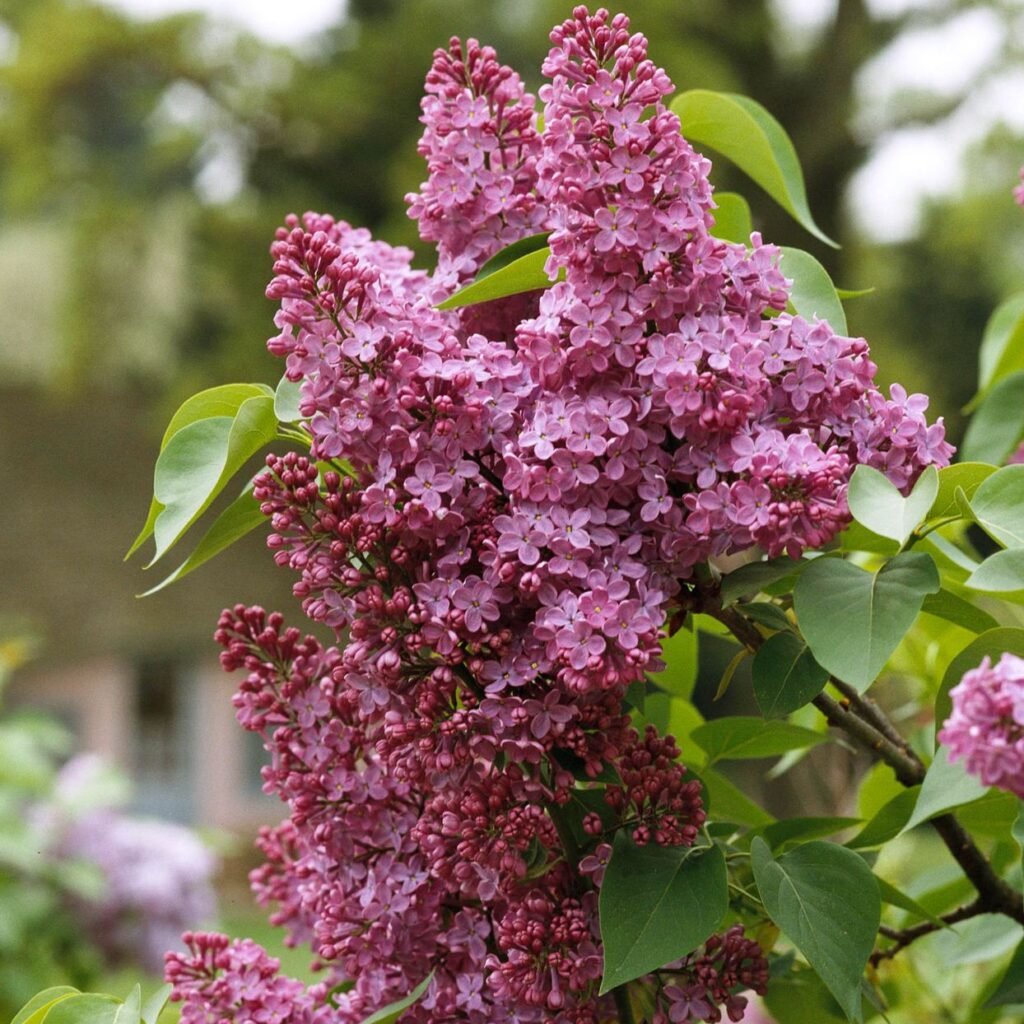
Not all lilacs are the same. Depending on your space, climate, and color preference, you can choose from several beautiful varieties:
1. Common Lilac (Syringa vulgaris)
- The most traditional and fragrant type.
- Grows 8–15 feet tall.
- Blooms in shades of lavender, purple, pink, and white.
2. Dwarf Korean Lilac (Syringa meyeri ‘Palibin’)
- Compact size (4–6 feet tall), perfect for small gardens or containers.
- Blooms slightly later than common lilacs.
- Strong fragrance and excellent disease resistance.
3. Japanese Tree Lilac (Syringa reticulata)
- Grows like a small tree (up to 20 feet).
- Creamy white blooms in early summer.
- Mildly fragrant and very hardy.
4. Miss Kim Lilac (Syringa patula ‘Miss Kim’)
- A late-blooming, compact variety (6–8 feet).
- Deep lavender buds open to pale lilac flowers.
- Known for its strong, spicy-sweet scent.
5. Bloomerang Lilac (Reblooming Variety)
- Blooms in spring and again in late summer or fall.
- Compact and ideal for continuous fragrance.
Pro Tip:
If fragrance is your top priority, go for Syringa vulgaris or Miss Kim — both are known for their exceptionally sweet scents.
Step 2: The Ideal Location — Sunlight and Airflow
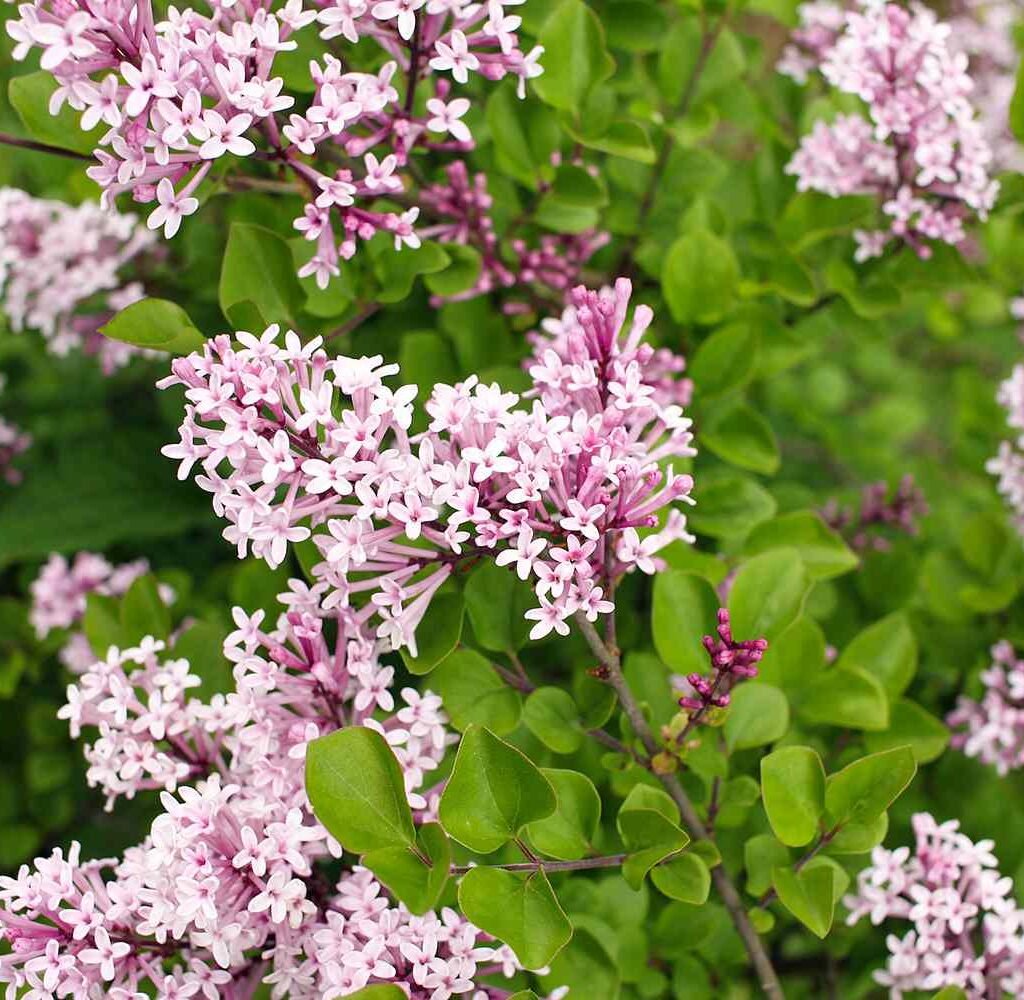
Lilacs love the sunshine. To get those abundant, fragrant blooms, you’ll need to provide the right conditions.
Light:
- Full sun is essential — at least 6 hours of direct sunlight per day.
- Less sun means fewer flowers and weaker fragrance.
Air Circulation:
- Lilacs dislike humidity and stagnant air, which can cause fungal diseases.
- Choose an open spot where breezes can move freely.
Soil:
- Lilacs prefer well-drained, slightly alkaline soil (pH 6.5–7.5).
- Avoid soggy, clay-heavy spots — these lead to root rot.
Pro Tip: If your soil is acidic, add garden lime once a year to balance pH and promote better blooming.
Step 3: Planting Lilacs
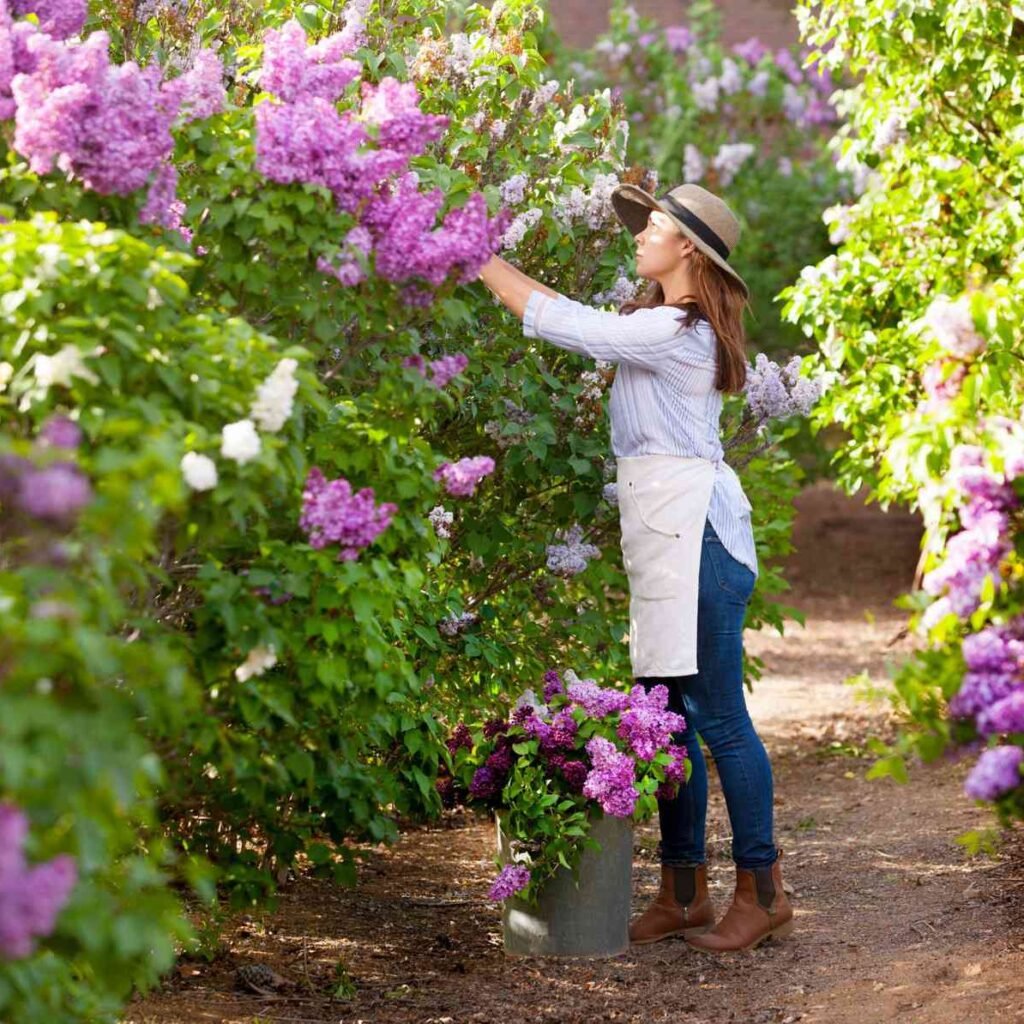
Best time to plant:
- Fall or early spring, when the ground is workable but not frozen.
How to plant:
- Dig a hole twice as wide and as deep as the root ball.
- Mix compost or aged manure into the removed soil to enrich it.
- Place the lilac shrub so the top of the root ball is level with the soil surface.
- Backfill, gently firming the soil to remove air pockets.
- Water deeply.
- Add a 2–3 inch layer of mulch, keeping it away from the base of the plant.
Spacing:
- Space lilac bushes 5–10 feet apart depending on the variety.
- Give them room to grow — they’ll fill out beautifully over time.
Step 4: Watering and Feeding
Lilacs don’t need constant pampering once established, but they do appreciate consistent care during their early years.
Watering:
- Water deeply once a week during the first growing season.
- After establishment, they’re drought-tolerant but still benefit from occasional deep watering in dry periods.
Fertilizing:
- Feed in early spring with a balanced fertilizer (10-10-10).
- Avoid high-nitrogen fertilizers (like lawn food) — they promote leafy growth instead of blooms.
- Every 2–3 years, add compost or aged manure around the base.
Pro Tip: Stop fertilizing by mid-summer to let new growth harden before winter.
Step 5: Pruning for More Blooms
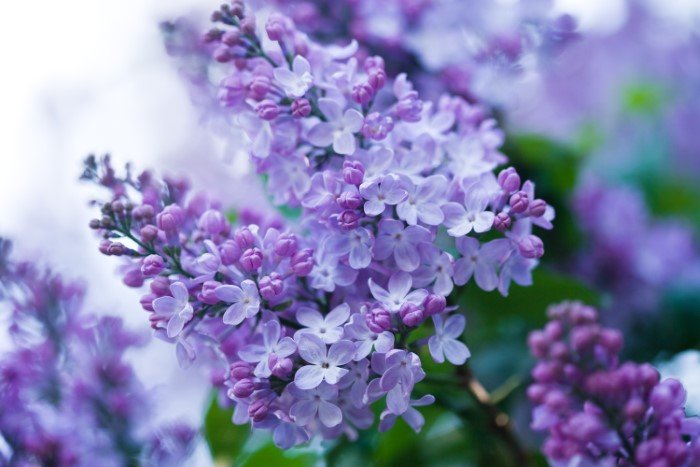
Pruning is key to maintaining your lilac’s shape and encouraging heavy flowering. But timing is everything.
When to prune:
- Right after the blooms fade in late spring.
- Pruning too late (after midsummer) removes next year’s flower buds.
How to prune:
- Remove spent flower clusters to prevent seed formation.
- Cut out dead, weak, or crossing branches.
- Every 2–3 years, remove one-third of the oldest stems at the base — this rejuvenates the plant.
- Thin out dense growth to improve air circulation.
Pro Tip: Older lilacs that have become woody and unproductive can be rejuvenated by cutting them back to 6–8 inches above the ground in late winter. They’ll regrow stronger and bloom again within 2–3 years.
Step 6: Encouraging Sweet Fragrance and Abundant Blooms
A healthy lilac rewards you with not just flowers, but fragrance that carries across the garden.
To get the most scent and color:
- Ensure full sun — this is the biggest factor.
- Don’t overfertilize — too much nitrogen weakens bloom quality.
- Deadhead after flowering to redirect energy to next year’s buds.
- Prune lightly and regularly to keep the shrub open and productive.
For extra fragrance indoors, cut lilac stems early in the morning and place them in warm water immediately. Crushing the stem ends slightly helps them absorb water better and keeps blooms fresh longer.
Step 7: Winter Care
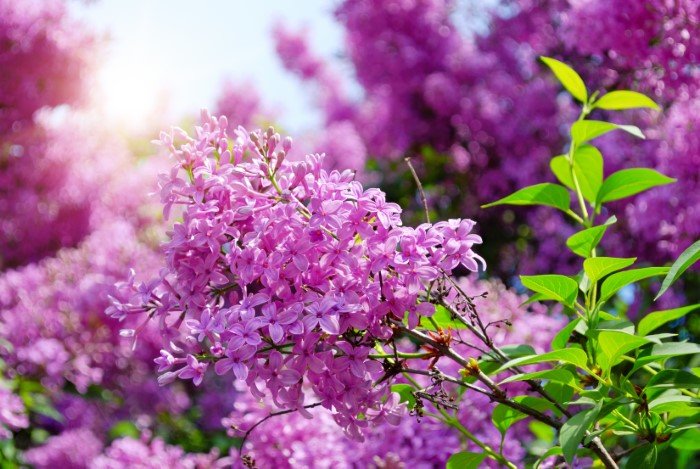
Lilacs are hardy plants, especially varieties suited to zones 3–8, but they still benefit from a little winter preparation:
- Mulch the base with straw or bark to insulate roots.
- Avoid pruning in winter — you’ll remove the next year’s buds.
- If snow piles up on branches, gently shake it off to prevent breakage.
Pro Tip: In very cold regions, wrap young lilac stems with burlap during their first winter for protection.
Step 8: Dealing with Common Lilac Problems
Even healthy lilacs can encounter a few issues. Fortunately, most are easy to prevent or fix.
1. Powdery Mildew
- Appears as white film on leaves.
- Improve air circulation and avoid overhead watering.
- Use a natural fungicide if needed.
2. Lack of Blooms
- Usually due to too much shade, overfertilizing, or pruning too late.
- Move to a sunnier location or adjust care routine.
3. Borers or Aphids
- Inspect stems regularly.
- Remove infested wood or spray with insecticidal soap.
4. Yellowing Leaves
- May indicate poor drainage or low soil pH.
- Add lime if soil is acidic and ensure good drainage.
Pro Tip: Once mature, lilacs are remarkably resilient and rarely suffer from serious problems.
Companion Planting Ideas
Lilacs blend beautifully with other spring bloomers for a breathtaking seasonal display:
- Tulips and Daffodils: Brighten the base with color.
- Peonies: Their bloom time overlaps beautifully.
- Hostas or Ferns: Great companions for shaded lilac bases.
- Mock Orange or Spirea: Extend the blooming season into early summer.
Planting a mix ensures your garden remains colorful even after lilac season ends.
Final Thoughts: A Garden Perfumed by Spring
There’s something magical about growing lilacs. They’re a living link to simpler times — an old-fashioned beauty that rewards patience with fragrance and grace.
From the moment those first buds swell in spring to the heady perfume that follows, a lilac bush transforms your garden into a sanctuary of scent and color. And with the right care — sunlight, pruning, and a little love — it will continue to do so for generations.
So this spring, when you breathe in that sweet, nostalgic fragrance, you’ll know you’ve cultivated more than just a shrub — you’ve grown a memory that blooms anew each year.
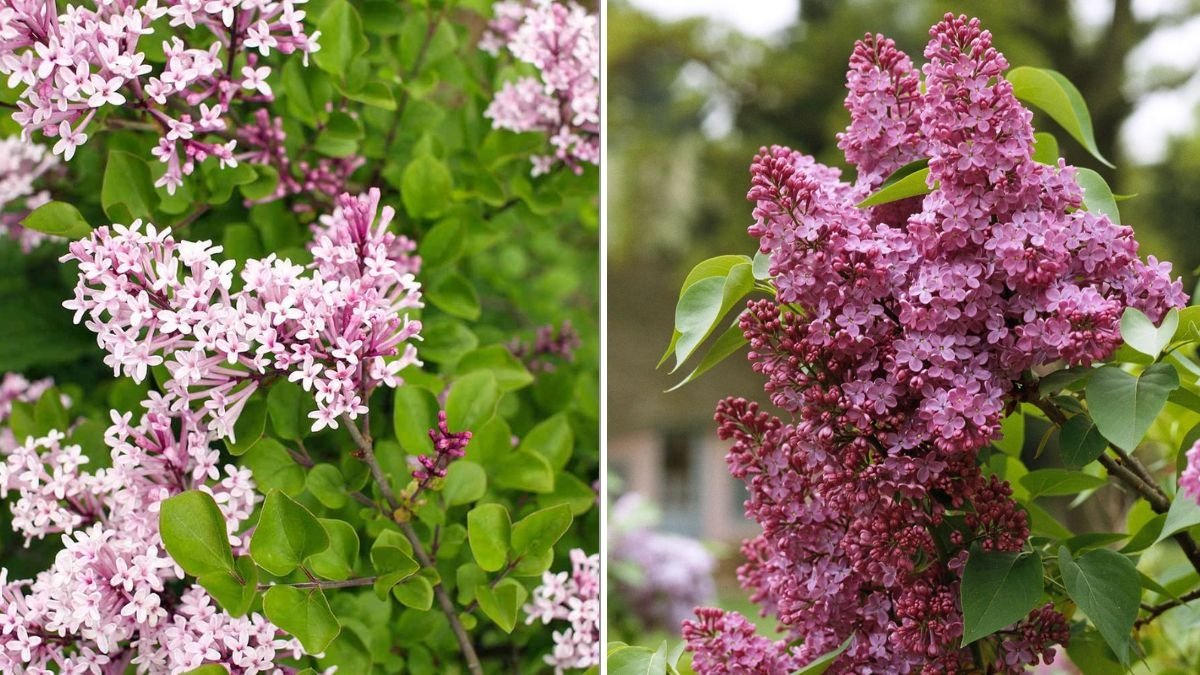



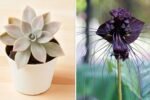

Leave A Comment